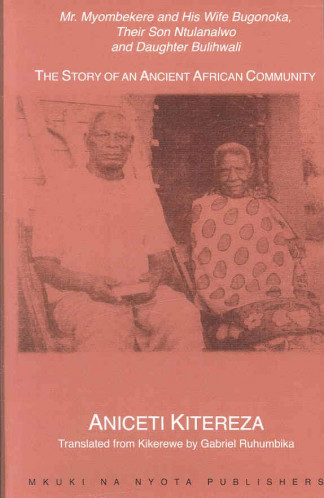Product description
This story unfolds amidst the traditional social and cultural life of the people inhabiting Ukerewe in northern Tanzania. It tells of the lives of Mr Mr Myombekere and his wife Bugonoka whose love survives despite their failure to conceive children i
..
read more
This story unfolds amidst the traditional social and cultural life of the people inhabiting Ukerewe in northern Tanzania. It tells of the lives of Mr Mr Myombekere and his wife Bugonoka whose love survives despite their failure to conceive children in a polygamous society where sterility is stigmatised, bearing children is a central source of meaning in life, and a man is expected to marry additional women until he produces a child. This couple remain committed only to one another and search for a cure to their ailment. Their actions strengthen their relationship, and they become an exemplary couple in their society, finally rewarded by the birth of a son and daughter. The genesis and evolution of Kitereza's epic novel and its context is as perhaps as remarkable as the work itself. Kitereza was born in Ukerewe in 1896 and wrote at the height of colonial rule, in part to preserve a culture threatened with extinction. He wished to keep alive the relationships of a people with one another and the land, and the spirit of cooperation on which their social life was based. He chose to write in his native Kikerewe because 'above all, I wanted this to be a way of preserving the language of our ancestors, by showing the reader how beautifully they spoke to each other'. This classic Tanzanian story was written in Kikerewe in 1945, but to this day, remains unpublished in this language. Failure to find a publisher for the Kikerewe work persuaded Kitereza to translate his work into Swahili in 1969, which was then published in 1980 and widely acclaimed. Previously only available in the author's own Kiswahili translation, this is the first complete translation into English. The translator, Gabriel Ruhumbika is a writer, professor of literature and descendant of Kitereza. He had unique access to the author's manuscripts and diaries. Ruhumbika also provides a comprehensive introduction and explanatory notes on the text.
read less
















